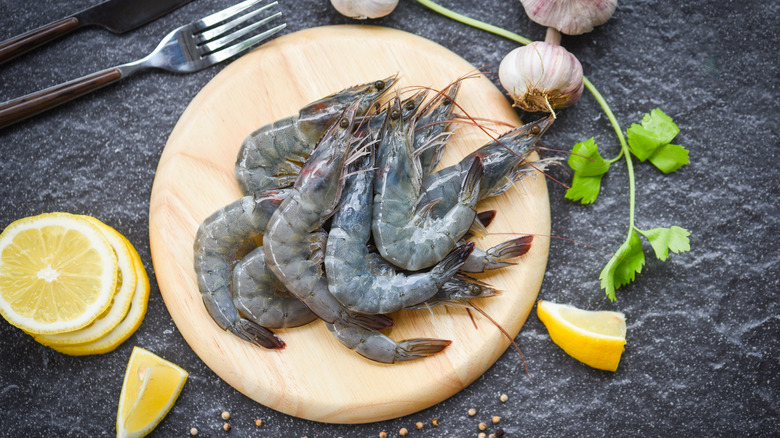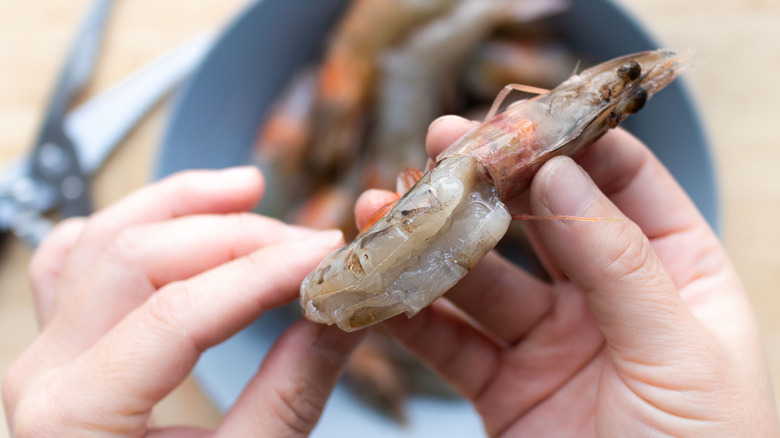Is It Really Necessary To Devein Shrimp?
Peeling and deveining shrimp can be a tedious process, but it's not as bad as accidentally crunching into a shrimp shell while you're trying to enjoy your seafood pasta. While it's convenient to grab a bag of already deshelled, deveined shrimp at the supermarket, it's the significantly pricier way to go. That's because as much as it's a hassle to remove, that vein is not something you want to be eating. According to The Takeout, shrimp are bottom feeders, which means they eat off the ocean floor.
You may assume this has nothing to do with a vein running along their back, but that vein isn't actually a vein at all. It's the shrimp's digestive tract, meaning it contains all the undigested food matter and digested waste. Cooking and eating shrimp with the vein intact isn't harmful in any way, but it will contribute a gritty texture to your dish. And unless you're cooking a shrimp dish that's flavorful or saucy enough to mask it, you'll likely be able to taste some muddiness too.
How to properly devein shrimp
Deveining shrimp first starts with deshelling it. Simply Recipes explains that the vein is located on the outer crevice of the shrimp's back, underneath the shell. To access the vein, you'll need to fully remove the shell, then make a shallow incision with the tip of a paring knife. This will expose the vein so you can then push it out with the tip of the knife and discard it. According to Cockles and Muscles, smaller shrimp doesn't always need deveining, as the digestive tract is just too tiny and inconvenient to remove, and if this is the case, you probably won't taste a difference.
If, however, you don't want to take any chances with even the smallest trace of digested waste in your food, you might want to invest in a shrimp deveining tool. These are especially handy if you tend to cook with a lot of shrimp, as they are an all-in-one tool that can peel, devein, and butterfly the shrimp. It's not necessary to use a special tool to do so, but deveining your shrimp is definitely an important step in the cooking process.

